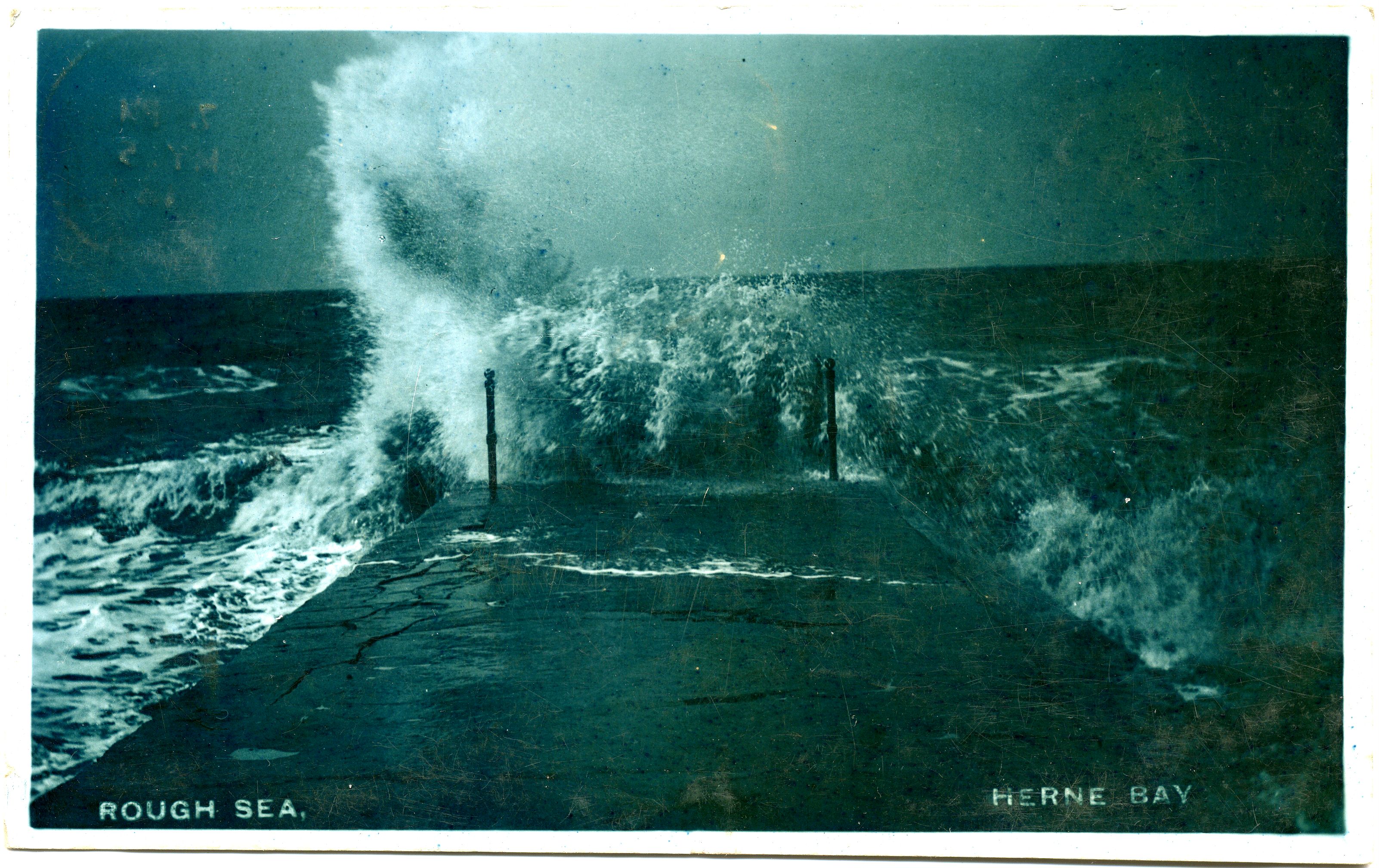Fred C. Palmer of Tower Studio, Herne Bay - postcard, 1913
Source: Wikimedia Commons
According to Brian Dillon in Tate Etc. 'something of the same semantic exchange between image, text and unseen history circulates in The J. Street Project (2002–2005): a film, photographic series and wall display which record the 303 thoroughfares (streets, alleyways, modest paths) in Germany that are still named for the Jewish communities that once resided, worked or traded there. “Still named” is not exactly the phrase here, of course, because what Hiller has archived is a series of places that lost their names in the Nazi era and have since had them reinstated ... As Hiller’s film demonstrates, contemporary life carries on around these traumatic inscriptions as though they were not there: the memorial name becomes just another textual element (ignored by passers-by) in the street furniture of the modern city, so that it is entirely unclear if it functions as a means of recall or amnesia.' I sat and watched the film for a while and noticed the way that she classified and ordered the material, just as she had earlier devised a typology of rough sea imagery, except that the sequencing here seemed to be based more on the people passing the camera than the specifics of the view. The section I saw edited together footage of streets being entered by children, giving way to further scenes with old people - the places might have been interchangeable, but in each case the street signs were visible reminders of the contrast between past and present.
The final room of the Susan Hiller exhibition includes Voyage on a Rough Sea: Homage to Marcel Broodthaers from last year - the latest of various various works that have returned to the theme of rough seas. She says she actually met Broodthaers in 1972 at a London exhibition: 'in the pub afterwards I shyly mentioned that I was working with postcards of rough seas, and he told me something about his own postcard projects'. Broodthaers was himself concerned with classification and curation - that year in Düsseldorf he organised a display of eagles 'From the Oligocene to the Present', mixing together valuable sculptures with worthless modern objects like product labels and old champagne bottle corks. His film A Voyage on the North Sea (1974) (below) is often cited as a key work in the history of conceptual art and is explicitly referred to in Hiller's montage of re-coloured postcard images. His work has also inspired Tacita Dean (whose approach often resembles Susan Hiller's) and she paid tribute to him in Section Cinema (Homage to Marcel Broodthaers) (2002). Dean also made two of her large blackboard drawings derived from Broodthaers' film Chère petite soeur (1972), which was itself based on a found postcard from 1901, depicting a boat in a rough sea. Broodthaers used the postcard's message as subtitles, leaving the viewer to wonder (as in Hiller's rough sea installation) why people choose to send these particular postcard images... 'Dear little sister, this is to give you an idea of the storm which we had yesterday. I'll give you more details about it, best wishes and see you soon, Marie.'
The final room of the Susan Hiller exhibition includes Voyage on a Rough Sea: Homage to Marcel Broodthaers from last year - the latest of various various works that have returned to the theme of rough seas. She says she actually met Broodthaers in 1972 at a London exhibition: 'in the pub afterwards I shyly mentioned that I was working with postcards of rough seas, and he told me something about his own postcard projects'. Broodthaers was himself concerned with classification and curation - that year in Düsseldorf he organised a display of eagles 'From the Oligocene to the Present', mixing together valuable sculptures with worthless modern objects like product labels and old champagne bottle corks. His film A Voyage on the North Sea (1974) (below) is often cited as a key work in the history of conceptual art and is explicitly referred to in Hiller's montage of re-coloured postcard images. His work has also inspired Tacita Dean (whose approach often resembles Susan Hiller's) and she paid tribute to him in Section Cinema (Homage to Marcel Broodthaers) (2002). Dean also made two of her large blackboard drawings derived from Broodthaers' film Chère petite soeur (1972), which was itself based on a found postcard from 1901, depicting a boat in a rough sea. Broodthaers used the postcard's message as subtitles, leaving the viewer to wonder (as in Hiller's rough sea installation) why people choose to send these particular postcard images... 'Dear little sister, this is to give you an idea of the storm which we had yesterday. I'll give you more details about it, best wishes and see you soon, Marie.'

No comments:
Post a Comment